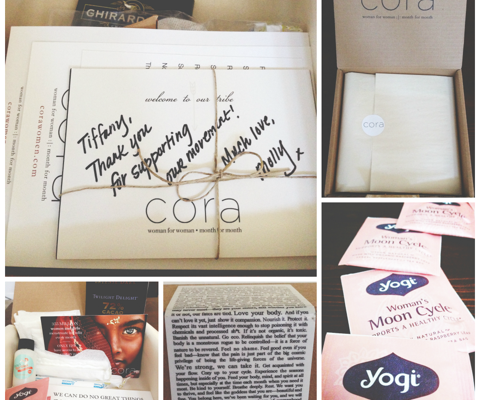I absolutely love the grocery store. In fact, people find my infatuation with browsing up and down the aisles, peering puppy-eyed at seemingly boring produce items, jars and juices quite mystifying. I don’t blame these haters. In fact, I understand. I empathize with their starkly contrasted, deeply embedded loathing of the grocery store. Eating healthy today has become no more simple than attempting to sprint through that creepy maze in The Shining. Running by food product after food product that desperately claims to be healthy, the marketing ploys on food shelves today can be dizzying. Are we merely mice inside of a maze of human health studies? How are we supposed to maneuver this maze of madness so we can avoid pitfalls, traps and sabotages to our healthy eating?  Lets start with grains. We’ve seen it all – whole grains, multi-grains, whole wheat, sprouted wheat, wheat-this, wheat-that. Well, they certainly aren’t making it easy for us! Just give me some healthy carbs! (And yes, these do exist.) When choosing healthy grains, it is not enough to merely read the front of the package – food manufacturers today are catching on to the health bug, but they are still businesses, and they want to minimize costs as much as possible, which means they would rather their foods be made with the cheapest ingredients and the fastest, most efficient processing system. This sadly means that their interests are quite opposed to ours, as healthy products require high quality ingredients and slower, smaller scale processing. To keep you interested as a customer, they will say that their bread is whole wheat or multi-grain, but you must look to the ingredient list to determine whether or not they are being wholeheartedly truthful. So, ignore the packaging and flip the product over immediately to inspect that ingredient list. The first ingredient must be WHOLE wheat – if it doesn’t say the world whole FIRST on the ingredient list, put it down and search on. If it’s not first it means they are using other cheaper ingredients as the primary ingredient and only throwing in a tiny bit of what is actually good for you. Secondly, the ingredient list should be as short as possible, avoiding other combinations of wheat that are just cheap fillers for the company (enriched bleached flour, wheat without the world whole next to it, etc) and any added sugars or preservatives. Finally, look for these key words in the ingredient list: stone ground, sprouted, and again, whole wheat.
Lets start with grains. We’ve seen it all – whole grains, multi-grains, whole wheat, sprouted wheat, wheat-this, wheat-that. Well, they certainly aren’t making it easy for us! Just give me some healthy carbs! (And yes, these do exist.) When choosing healthy grains, it is not enough to merely read the front of the package – food manufacturers today are catching on to the health bug, but they are still businesses, and they want to minimize costs as much as possible, which means they would rather their foods be made with the cheapest ingredients and the fastest, most efficient processing system. This sadly means that their interests are quite opposed to ours, as healthy products require high quality ingredients and slower, smaller scale processing. To keep you interested as a customer, they will say that their bread is whole wheat or multi-grain, but you must look to the ingredient list to determine whether or not they are being wholeheartedly truthful. So, ignore the packaging and flip the product over immediately to inspect that ingredient list. The first ingredient must be WHOLE wheat – if it doesn’t say the world whole FIRST on the ingredient list, put it down and search on. If it’s not first it means they are using other cheaper ingredients as the primary ingredient and only throwing in a tiny bit of what is actually good for you. Secondly, the ingredient list should be as short as possible, avoiding other combinations of wheat that are just cheap fillers for the company (enriched bleached flour, wheat without the world whole next to it, etc) and any added sugars or preservatives. Finally, look for these key words in the ingredient list: stone ground, sprouted, and again, whole wheat.
In simpler form, let’s strive for:
- sprouted grains
- whole wheat
- brown rice
- quinoa
- stone ground whole wheat flours
- stone ground corn
 Now that we have sorted through the grains, lets move on to oils and fats. Oils and fats are tricky because there are an immense amount of them out there. Fortunately, a good amount of the unhealthy ones pop up in processed foods, so it becomes easy to eliminate them if we aim to simply eliminate processed foods in general. Any vegetable oil which has to undergo an extraction process in order to be made into its allegedly “edible” form should not be consumed. This is because this extraction process, the process of separating the oil from its source (rapeseed, corn, soybean, palm kernel, for example) creates toxins, which are undoubtedly detrimental to proper body function and metabolism. Secondly, we have been told and often blindly accept, that only unsaturated fats are healthy for us, and that, conversely, saturated fats are the devil of our diets. However, isn’t it interesting that only since the government’s campaign in the 1950s to promote saturated fats as artery-clogging have we seen an exponential increase in heart-related diseases, obesity and other metabolic disorders? Furthermore, our body is made up of 97% saturated fat, and 3% polyunsaturated fats, a balance which needs to be maintained for proper health. What I am trying to say is – it is actually extremely necessary to consume saturated fats, such as high-quality (grass-fed) butter and coconut oil. In fact, unsaturated fats actually undergo a process called oxidation, which causes cell mutations, leading to inflammation, clogged arteries, cancer, etc. Not good. To make it easy for you, since all of this health nonsense has become about as mind-boggling as everyone’s recent obsession with Miley Cyrus’ twerking amidst greater international crises, here is a cheat sheet regarding the do’s and dont’s of oils and fats. DO:
Now that we have sorted through the grains, lets move on to oils and fats. Oils and fats are tricky because there are an immense amount of them out there. Fortunately, a good amount of the unhealthy ones pop up in processed foods, so it becomes easy to eliminate them if we aim to simply eliminate processed foods in general. Any vegetable oil which has to undergo an extraction process in order to be made into its allegedly “edible” form should not be consumed. This is because this extraction process, the process of separating the oil from its source (rapeseed, corn, soybean, palm kernel, for example) creates toxins, which are undoubtedly detrimental to proper body function and metabolism. Secondly, we have been told and often blindly accept, that only unsaturated fats are healthy for us, and that, conversely, saturated fats are the devil of our diets. However, isn’t it interesting that only since the government’s campaign in the 1950s to promote saturated fats as artery-clogging have we seen an exponential increase in heart-related diseases, obesity and other metabolic disorders? Furthermore, our body is made up of 97% saturated fat, and 3% polyunsaturated fats, a balance which needs to be maintained for proper health. What I am trying to say is – it is actually extremely necessary to consume saturated fats, such as high-quality (grass-fed) butter and coconut oil. In fact, unsaturated fats actually undergo a process called oxidation, which causes cell mutations, leading to inflammation, clogged arteries, cancer, etc. Not good. To make it easy for you, since all of this health nonsense has become about as mind-boggling as everyone’s recent obsession with Miley Cyrus’ twerking amidst greater international crises, here is a cheat sheet regarding the do’s and dont’s of oils and fats. DO:
- Consume more healthy sources of saturated fat to maintain an appropriate balance of fats in your body (grass-fed butter, coconut oil, grass-fed red meat, organic whole milk, raw cheese).
- Continue consuming healthy sources of unsaturated fats, like avocado, nuts, nut butters, olive oil.
DON’T:
- Avoid unhealthy, processed unsaturated fats (canola oil, soybean oil, palm kernel oil, or anything that mentions oils from corn, rapeseed, or something which requires extraction).
Once you understand what to avoid, all it takes is that extra 5-10 seconds to flip over the product, and take a quick scan of the ingredient lists. Try to avoid falling into the trap of believing the front of the label. Being an educated consumer ensures you are buying only the best ingredients for you, to keep you healthy and happy. And we like that. By




Katrina Manning
I like everything except quinoa. Well, I eat quinoa sometimes, but I don’t love it. I force it down the hatch though, just so I can feel good about myself. Then, I drown it in some decaf green tea for good measure. I know, quinoa is one of the superfood kings, that is the only reason I eat it. All the other things, whole wheat, whole grains, seafood, lean meats, steel cut oats, fruits, and veggies–I adore those things…